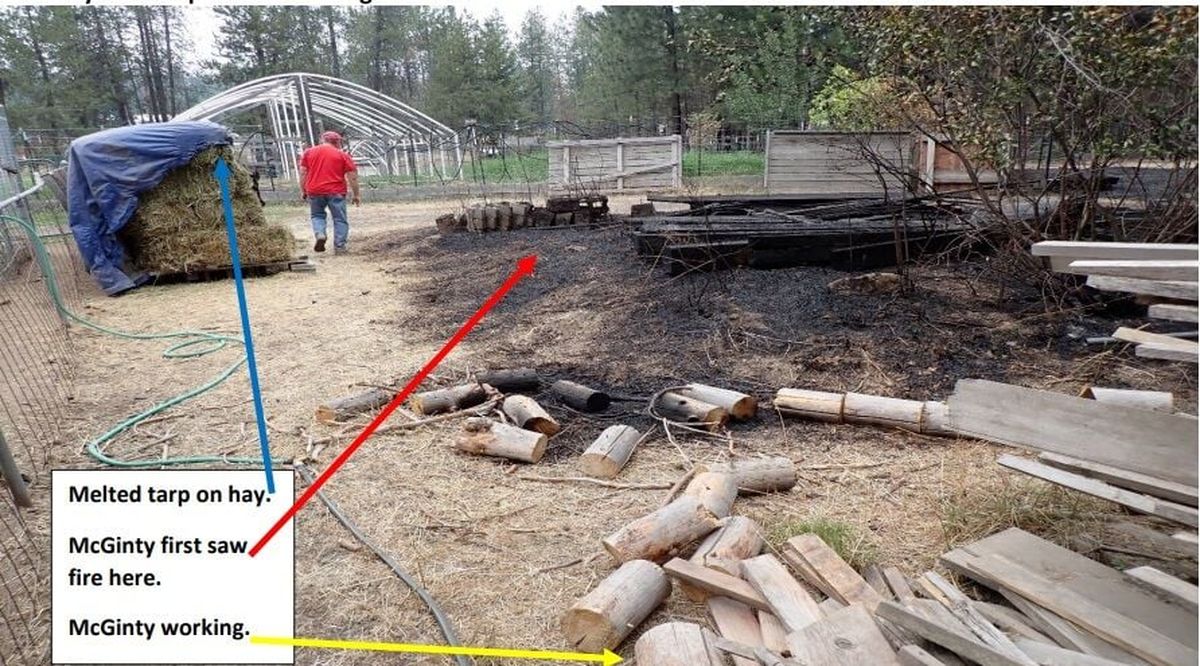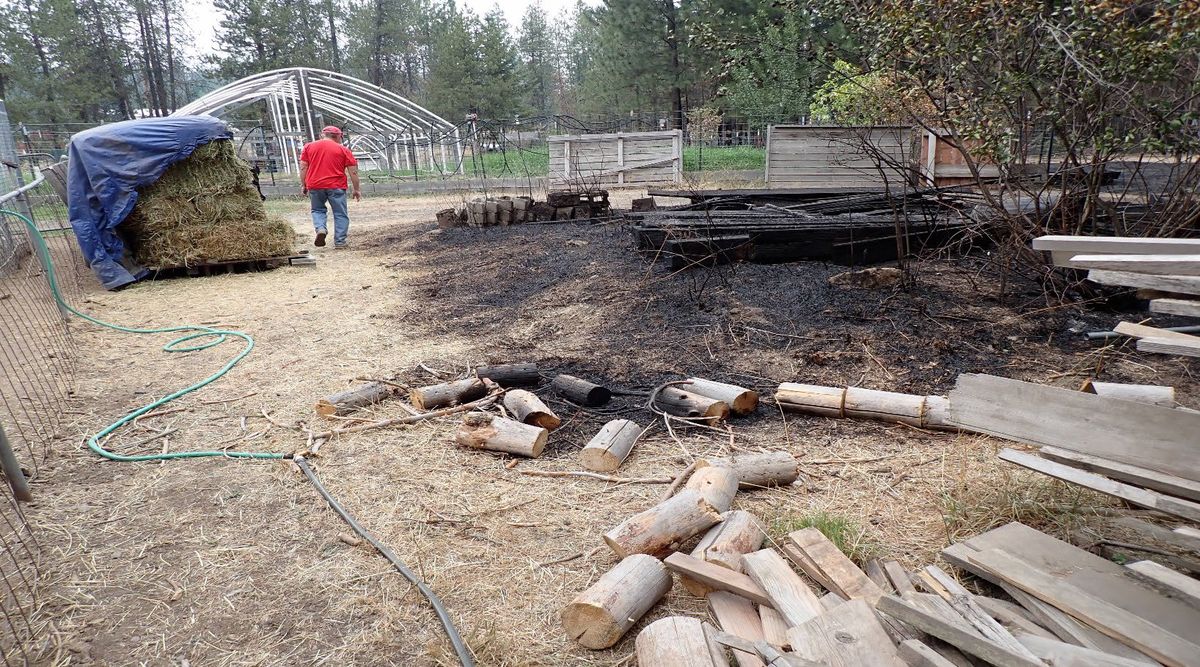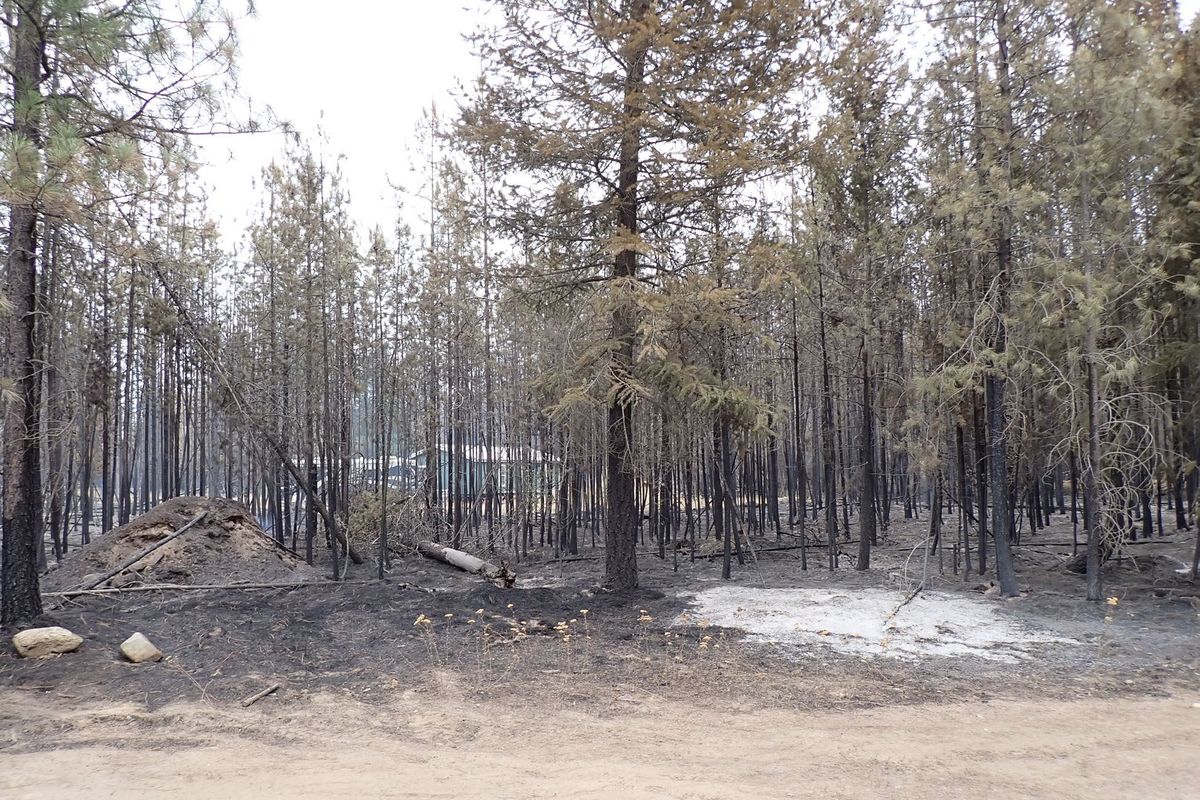Cause of Oregon Road fire undetermined, DNR says
The origin area of the Oregon Road Fire.
The Department of Natural Resources was unable to determine a definitive cause of the Oregon Road fire after a lengthy investigation.
While the fire is listed as human-caused because there was no evidence of a natural cause, there was also no evidence of an intentional fire start, according to a report on the investigation the agency released this week.
“The Wildland Fire Investigation determined the cause of the fire to be most likely Human; Spontaneous Combustion; source Unknown,” the report reads. “Within the Origin Area were cured/dry grasses mixed with seasoned lumber under a clear poly tarp next to creosote treated railroad ties, and a chip pile.”
The Oregon Road fire was reported at about 4:15 p.m. on Aug. 18. The fire consumed more than 10,000 acres, leaving one man dead, and destroyed 126 homes and 258 outbuildings.
“Whether you’re a big company or just working by yourself in the back yard, it’s critical that everyone does their part to be one less spark,” Commissioner of Public Lands Hilary Franz wrote in a statement. “Keeping Washington safe – especially during wildfire season – is up to all of us, and we all need to be accountable for our actions. Our neighbors who lost their homes deserve nothing less.”
The fire was reported by Patricia McGinty, who owns the property at 12925 E. Oregon Road in Elk where the fire started. The fire origin point was locked down less than an hour after the blaze began, according to the report.
McGinty’s husband, Jim McGinty, said he was working outside as embers and ash fell on him. The embers were coming from the southeast, he told investigators.
He heard a crackling sound, and then a pile caught fire. Jim McGinty attempted to put out the fire with a hose, but a gust of wind pushed the fire into the dense forest across the access road, he said.
The McGintys’ neighbor, Stuart Anderson, told investigators he hadn’t heard any chainsaws or other outdoor equipment running before the fire started.
Other neighbors also said they didn’t hear any outdoor equipment or see any other smoke in the area before the Oregon Road fire began. Investigators indicated it’s unclear where the ashes or embers that Jim McGinty said he saw would have come from.
The investigation concluded that, given the weather conditions and lack of nearby fires, it’s unlikely embers actually were falling.
Lloyd Vaughn, who owns vacant land near the McGintys, said that two years before the fire, he was working on his land and saw compost piles on the McGintys’ land smoking.
Vaughn assumed it was from the decomposition of those piles and was worried they would spontaneously combust and start a wildfire, he told investigators.
Vaughn said he warned Jim McGinty, who said he would take care of it. The McGintys did not immediately respond to request for comment.
Ultimately, DNR determined the fire was likely caused by spontaneous combustion, but that finding is not definitive, according to the report.
Dick Ziehnert, vice chair of the Spokane Region Long Term Recovery Group, said the report brings closure.
“In effect, there’s no smoking gun in Elk,” he said.
Residents of Medical Lake, where an Inland Power and Light security light was found to have started the Gray fire the same day, will likely be tied up in litigation for years against the power company. That’s unlikely to happen in Elk, Ziehnert said.
“For Elk, maybe the blessing is we can go ahead and move on with life,” he said.
It’s frustrating that the federal government didn’t step in to help, Ziehnert said. President Joe Biden has yet to make a determination on whether Spokane County fire victims will get individual aid through FEMA, something that frustrates local leaders.
“It was a group tragedy, but everyone is left on their own to deal with the aftermath,” Ziehnert said.



